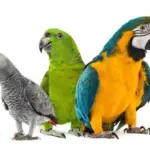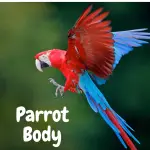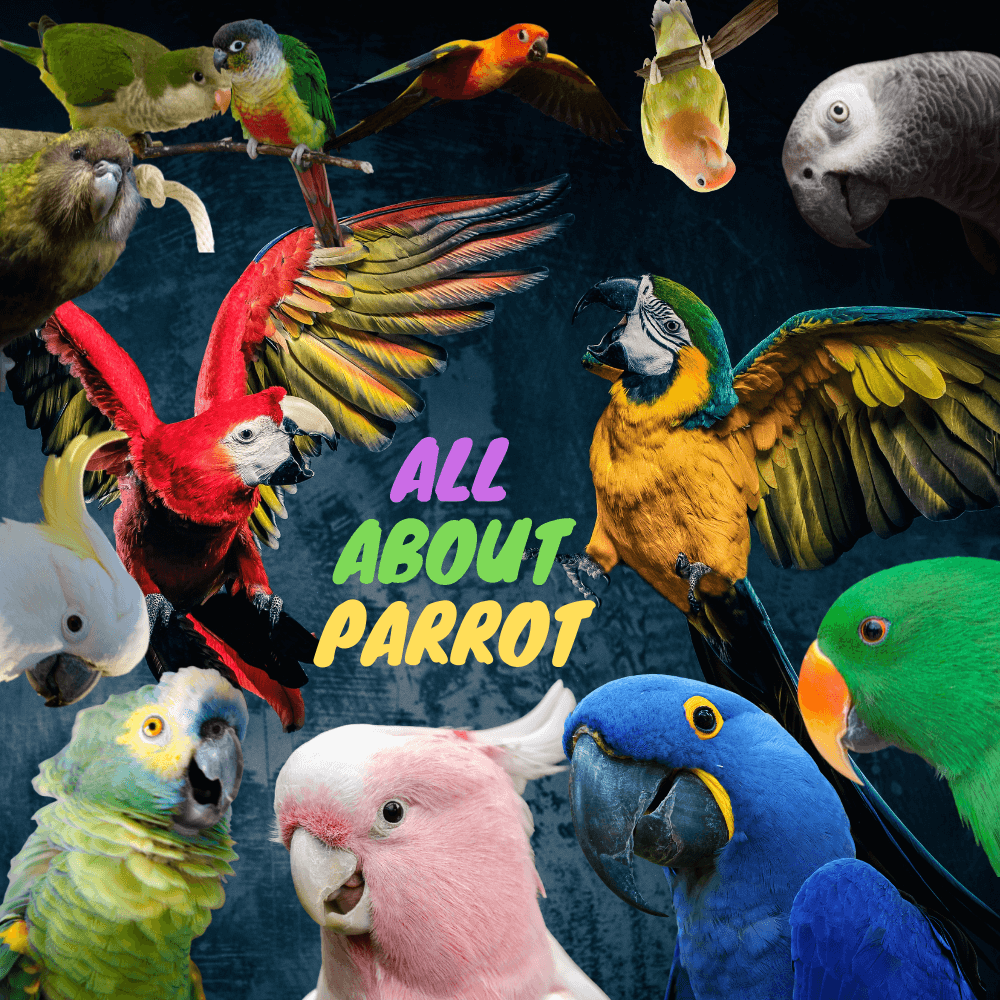
All you need to know about parrots: Its brightly colored plumage, its astonishing dexterity, and its gift of imitation have always made the parrot fascinate men. The Indians saw in him the symbol of solar energy. The quest for its feathers led the Incas to the heart of the jungle. Collectors pay fortunes to acquire one of these exotic birds…
The life of parrots
All about parrot life
Parrot fruit and seeds, even though, tasted elegantly
Macaws feed mainly on the seeds and fruits, which they find in abundance in the rainforest. But some trees seem to attract them in particular. The “hourglass”, for example. Its sap is poisonous (the Indians use it to poison streams, in order to then collect the fish killed), but its fruits have a large number of bivalve cockles which, when ripe, burst with a dry noise, hence the scientific name of the tree Hura crepitans, releasing a seed that macaws feast.
These birds also appreciate the fruits of Lecithys, a kind of large thick-walled capsules, called “monkey pots” or “quatélés”. When these fruits are ripe, they open through a circular operculum at the top, making the seed accessible. They also love the juicy fruits of the spondias, also called “plums of Spain” or “red mombins”.
Parrot nutcracker beak
Thanks to their very specific beaks, macaws and other parrots are the only ones able to consume certain particularly leathery fruits and seeds, such as bertholletia fruits, known as “Brazil nuts”: their triangular brown shell, extremely resistant, hide an almond very popular with macaws.
The upper mandible of the beak, highly developed and terminated in the shape of a sharp hook, allows macaws to extract seeds hidden in deep receptacles. Although noticeably shorter, their lower mandible is also large and curved upwards. The combined thickness of the two makes the spout a sturdy clamp.
Its action is further enhanced by powerful muscles firmly inserted on the cranial bone. In many birds, the upper mandible is relatively mobile relative to the skull. But, in parrots, this mobility is particularly important because the mandible is connected to the cranial bone by a kind of tendon hinge. It can thus, by tilting slightly downwards, operate like a lever to break the hardest shells.
The language completes this effective apparatus. Very thick, strongly muscular, and rough, it is usually terminated by a skin that protects it against the roughness of dried fruits. The bird uses it to hold food. When it wants to shell a seed, the macaw wedges it firmly between the tongue and the underside of the upper mandible, then it removes the bark by operating the sharp edges of the lower mandible. To prevent the seed from slipping, the underside of the upper mandible is also lined with a series of transverse grooves reminiscent of a coarse grater.
THE THIRD LEG OF THE PARROT
The third leg of the parrot
The beak of parrots is also used to move. When a macaw wants to gain a branch close to the one where it is, rather than resorting to theft, it stretches its neck, grabs the coveted branch with its beak, and then clings to it with a paw. Having thus two points of support on the new branch, he operates a recovery at the end of which, having ensured his grip with his fingers, he finally loosens the embrace of his mandibles. Sometimes parrots hang from a twig, as if by play.

Paws for eating
For food, parrots also use their paws. These are terminated by zygodactyl fingers, that is to say, opposed two by two, which ensure a very powerful grip. Parrots frequently use one of their legs as a hand to carry food to their beaks. Of all birds, they are the ones that show the greatest dexterity. It has even been found that, just like humans, parrots can be right-handed or left-handed.
They often have a very strong preference for one of the two legs. This preference may be the same for all birds of a given species or may vary between individuals in another species. Studies conducted by McNeil and his team in 1971 showed that the bones of the preferred leg were slightly longer than those of the other leg.
THE FATE OF SEEDS
The Fate of seeds
By grinding the seeds they eat, parrots make them unsuitable for germination and therefore play a negative role in the renewal of the plant environment in which they live. On the other hand, when they swallow a fleshy fruit round, the seeds it contains remain intact and the result is different. Especially since some seeds must imperatively pass through the digestive system of birds for the germinative process to be triggered.
There is then a symbiosis between the plant that provides the food and the bird that makes its germination possible. Although no precise study has measured the impact of parrots on the environment where they live, it can be thought that they participate in the essential balance of the tropical forest.
Shouts and gestures keep the group together
Macaws are sociable and gregarious. They live in pairs or families during the breeding and breeding period. Then they gather in small flocks of about twenty birds, which move following the fruiting of the trees and return, every evening, to their collective dormitory.
But, within this flock of macaws that evolve together, we can still identify the members of the same family unit: the birds fly together, perch side by side to rest or sleep, peck gently, and groom each other using only their beaks. This kind of ritual has the function of maintaining family cohesion and marital ties outside the breeding season.
No leader or dispute
There is no well-defined hierarchy within these bands of macaws and therefore no “leader” dominating his congeners. However, young parrots, as is often the case with species with comparable social organization, give way to their elders at feeding sites. This pre-eminence of adults is justified from a biological point of view. In the interests of the species itself, priority must be given to birds that are already capable of perpetuating themselves and not to those that will still have to escape many perils before being able to reproduce themselves.
When they are not busy nesting, macaws exploit for food a large territory, which they do not seek to defend. Several distinct bands can therefore be found on the same trees provided that they are particularly abundant in fruit. One can even find gatherings of several dozen birds, bringing together different species, for example, macaws and macaws. The fact that these different birds do not seek to impose themselves on a given territory is explained by the abundance of plant food stock, which eliminates any need for competition.
This is especially true in the rich tropical and equatorial forests frequented by macaws. But, if the various groups cohabit, they tend not to mix. And the flocks isolate themselves from each other again during the day, as soon as the birds, full, rest and, of course, for night rest.
Quarrels are very rare between congeners. Macaws have no real reasons for discord: they do not have to compete for food or females, since, once the pairs are formed, they remain united for a long time

A fixed domicile
The rhythm of daily activities obeys a marked regularity. As soon as the sun rises, the groups leave the dormitory to go to the feeding areas. They then return only at sunset. When they move, macaws have, despite their large size, a fast flight that they perform non-stop with regular and low-amplitude wingbeats.
When they make long journeys, they pass over the canopy, this almost continuous vegetal vault formed by the tops of large trees. Over shorter distances, they also sometimes fly through the foliage or, more often, take advantage of the gaps corresponding to the many rivers.
But, in no case, do the macaws move more than 10 km from their base in order to be able to return each evening to their roost, usually fixed from one year to the next and always located in the upper foliage of the trees.
When feeding, parrots remain silent so as not to attract the attention of potential predators. On the other hand, if they perceive the proximity of danger, their worried nature pushes them to loudly express their anxiety. The loud, high-pitched, and squeaky cries uttered by the first alerted birds arouse the attention of their peers and are immediately taken up in chorus by the whole troupe, which thus manifests its cohesion in the face of danger, supposed or real.
It is possible that these discordant concerts have a chilling effect on potential predators, distraught by such cacophony. Macaws are generally rather confident animals that are reluctant to flee, especially in remote areas, where humans do not exert their influence.
A companion for life
Macaws are monogamous and their lives are placed under the sign of fidelity within the couple. The links between the partners are very strong and their union lasts several years, even until the disappearance of one of them.
As the nesting season approaches, the small flocks of macaws dissociate. Adult singles match. But the modalities of courtship displays, like many aspects of the reproduction of free-ranging macaws, are still poorly known, as it is so difficult to approach these parrots in the closed environment that is the tropical forest.
Old and newly formed couples isolate themselves from each other. Male and female caress and groom, scratch and smooth their feathers. These ritual manifestations are more frequent and intense during the breeding period, during which the male is also often involved in feeding his mate.
Like the majority of parrots, macaws nest in a cavity. Generally, a tree hole can be used from one year to the next. The chosen orifice is usually located in height, about twenty meters from the ground. The female lays two or three white eggs, directly on wood waste that lines the bottom of the cavity. Then she incubates them for four to five weeks. The male, who relays her only very rarely in this task, feeds her throughout this period. He carries in his crop the food he intended for his companion, then he regurgitates it when he arrives at the nest.
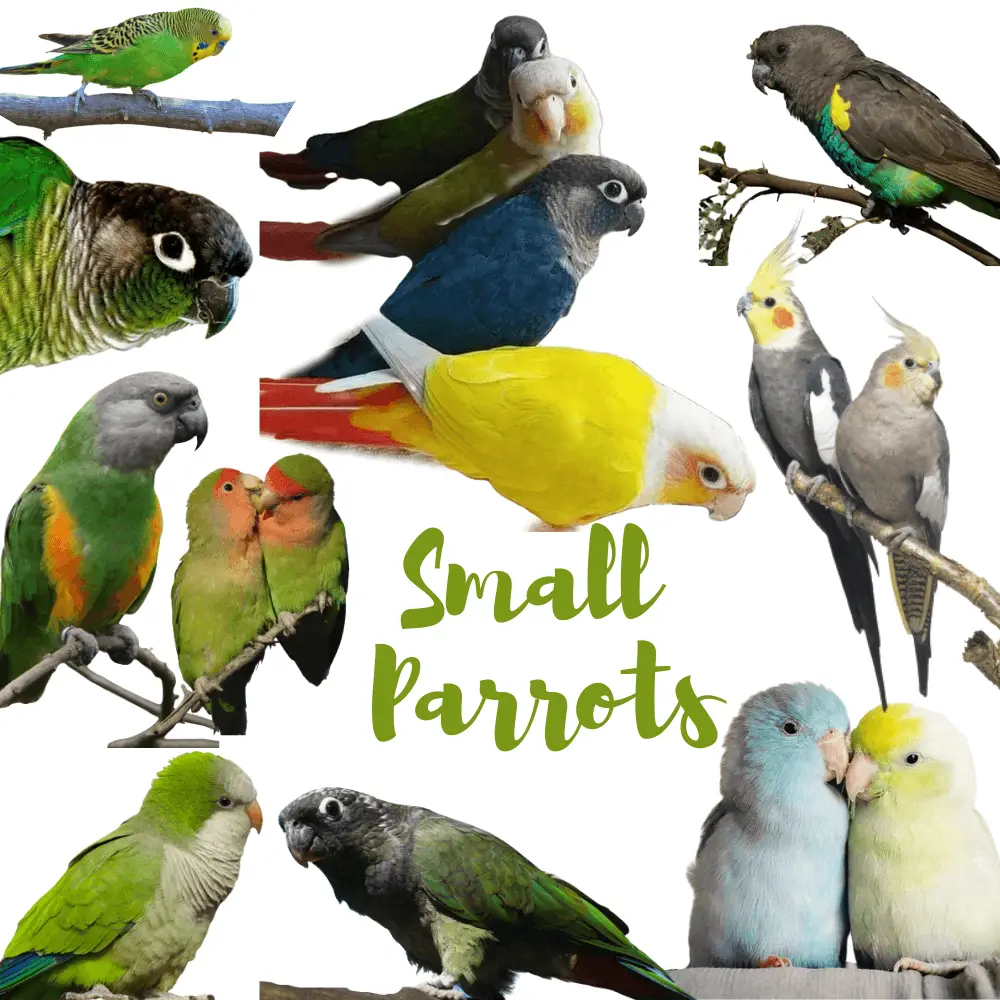
At hatching, the chicks are naked. Their growth is quite fast at first, but the first feathers appear only after four weeks. Feathering is not complete until ten weeks, and it is not until adulthood that the wing and tail feathers of parrots reach their full development.
The stay in the nest is long. It lasts three to four months. All this time, the young receive several times a day, with irregular frequency, a predigested vegetable porridge regurgitated by adults. At first, it is the male who takes care of most of the supply of the brood. As the chicks grow, the female can then abandon them for a while to assist the male in this task.
After leaving the nest, the young are still fed by their parents for some time, before they are able to find their own food and know how to consume it. The family group remains united at least until the next nesting season. Sometimes even beyond. Breeding pairs have been observed with immature macaws that they tolerated around the nest, suggesting that these were their offspring from the previous year.
Parrot natural environment and ecology
The tropical rainforest is the preferred habitat for macaws. It is in this environment with high temperature and humidity that parrots find in abundance the seeds and fruits or other plant elements that constitute their food, while the huge trees often have the trunk pierced with cavities conducive to their nesting.
Macaws are mostly found in low-lying areas, but they can climb to over 1,000 or 1,100 meters. Appreciating the proximity of the water, they frequently set up their dormitories on the edge of quiet arms of rivers or more tumultuous elements such as waterfalls or rapids.
This almost exclusive attachment to the rainforest poses the greatest danger to most macaws and other parrots, because of the damage that man brings to this environment. It is estimated that the world’s tropical forests are disappearing at a staggering rate of 30 hectares per minute, or about five times the size of Belgium each year. The soil on which tropical rainforests grow is both thin and relatively poor. The nutrients that trees benefit from are largely made up of the permanent decomposition of a huge plant mass, facilitated by heat and humidity.
Once the tall trees have been cut down, the thin layer of topsoil is soon washed away by the heavy rains that regularly fall on these regions between the tropics. Where the cover remains, it is too poor to allow the growth of large trees and the return to the previous state. At best, secondary vegetation settles that can only shelter a tiny part of the original fauna.
Macaws sometimes frequent this type of plant formation, but only marginally and episodically. They do not find enough food and do not feel protected in these sparse woodlands.
These brightly colored parrots with often variegated plumage are, despite their large size, very difficult to spot in their usual environment. This is due to the thickness of the foliage they frequent, their habit of standing almost permanently in the upper part of the largest trees, and the silence they observe as long as no danger threatens them. In addition, their plumage is an excellent camouflage.
Some species blend into the foliage, such as the military macaw or the chestnut-fronted macaw, which have predominantly green plumage. In other more variegated macaws, the great diversity of tones breaks, in multiple small spots of color, the silhouette of the birds which thus becomes less easily identifiable by predators. The most favorable times to observe macaws are in the morning and evening, when birds, in small flocks, fly from roosts to feeding areas.
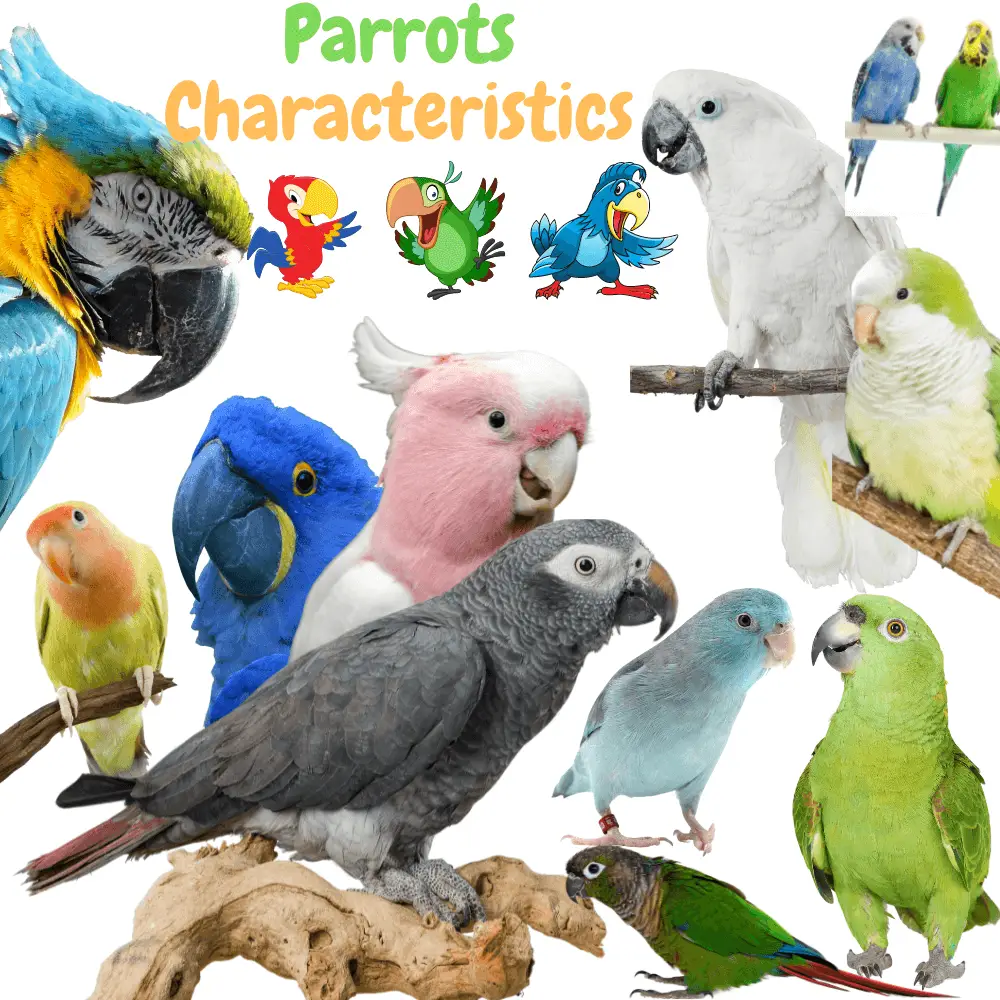
Fearsome harpy
Because of the height to which they are confined, macaws have virtually nothing to fear from terrestrial predators. However, sometimes some forest cats, such as the jaguar, ocelot, or jaguarondi, manage to capture a parrot that has ventured a little lower, enticed by particularly tempting fruits. But most often these are only young, inexperienced birds.
For macaws, the real danger, apart from man, comes from the air. Their main predators are large forest diurnal raptors, perfectly adapted to this type of environment. Their wings are broad and relatively short, their tail long. They can thus maneuver at high speed in the middle of the foliage.
Among these feared parrot hunters are the crested eagle (Morphnus guianensis), the ornate spizaetus (Spizaetus ornatus), and the impressive ferocious harpy (Harpia harpyja), which is one of the most powerful raptors in the world.
These large birds have a wingspan of between 1.50 and 2 m and have legs with thick tarsus, and robust fingers terminated by long and very curved nails. Curiously, they all wear a more or less prominent hoopoe on the top of the skull. Their prey includes macaws and many other birds, but also, often, monkeys.
Snow parrots
In popular imagery, parrots – especially macaws – are systematically associated with the deep and mysterious virgin forest. It is true that parrots particularly appreciate this type of environment. To be convinced, it is enough to consider the number of species present in the countries where the rainforest dominates.
In Brazil, Colombia, and Venezuela alone, for example, there are 70, 49, and 48 species of these hook-billed birds respectively. But the distribution of parrots and other parakeets is so extensive and the species so numerous that they are also found in all kinds of other environments.
Wild parakeets can be seen in the city, whether they are red-rumped parakeets (Psephotus haematonotus) in Australia or pink-collared parakeets (Psittacula krameri) in India. Some species frequent semi-desert environments, moving with the rains to find their food and nest in haste. This is the case for several small Australian parakeets, such as the blue-crowned parakeet (Polytelis alexandrae) or the black-tailed parakeet (Polytelis anthopeplus).
Finally, contrary to what is commonly believed, parrots do not necessarily require a warm climate. You can even meet some of them in snowy landscapes, which seems a little surprising. Thus, the kea (Nestor notabilis), a large parrot, of bronze color, lives between 600 and 2,000 m in the mountains of New Zealand. A vulnerable species, it has been protected since 1970. Similarly, the Pennant’s parakeet (Platycercus elegans) and the red-headed cockatoo (Callocephalon fimbriatum) are two Australian species that are found, among others, in the Southern Alps.
As for the parrots that inhabit the forests, they sometimes make incursions into the fields. It also happens that macaws, in a variable way depending on the species, venture into the open to reach the plantations of fruit trees made by man. These invasions are not appreciated, even if the small number of parrots they concern does not, in general, cause significant damage. But in Australia, the ploughing cockatoo (Cacatua pastinator) was actively hunted because of the damage it caused to crops. The ban on hunting or poisoning it as well as the extension of crops made it possible to rebuild its population, which had been greatly reduced.
Zoom on scarlet macaw
The various parrots in the genus Ara are characterized by their totally bare facial skin, like the macaw, or wearing only small feathers. They also have in common a long-stepped tail – the central feathers being the longest – and a richly colored plumage.
The plumage of the scarlet macaw is predominantly red. The wing feathers are yellow and blue (primary and secondary). The lower mandible of the bill is grey-black and the legs are dark grey. The plumage of both sexes is similar and the juveniles closely resemble adults with, however, less vivid colors.
Like all parrots, the scarlet macaw has a hooked beak that performs multiple functions, including that of the “third leg” when the animal moves. This is what really distinguishes the beak of parrots from that of other birds.
Another common feature of macaws and all Psittaciformes is the original arrangement of the four fingers of each paw. Indeed, the first finger (the thumb) and the fourth finger (or outer finger), are directed backward. This opposition of the fingers two by two (zygodactile) facilitates the intake of food or support. This morphological character is not the prerogative of parrots alone. Other species are endowed with it.
Most birds have a uropygial gland, located on the rump, which secretes an oily substance that the bird coats its plumage to protect it from water and desiccation. This gland, poorly developed in the majority of parrots, is even completely absent in macaws.
To compensate for this shortcoming, they carry, scattered on the body, plates of “powdery down”. This particular down, hidden under the external plumage, consists of short feathers with continuous growth (exceptional character) whose brittle end fragments into tiny particles that fulfill a role similar to that played by the sebum produced by the uropygial gland. Parrots rub their heads on these plates, then on their plumage to coat it with this “powder” with a waterproofing and softening effect. Other birds, such as herons, also use this system.
Parrots can imitate human speech when taught, but they do not speak. It is not yet known what is organic adaptation that allows this imitation. The language of parrots is, most often, prehensile. It is able to deftly hold food by applying it against the upper mandible;
The bird can, moreover, thanks to its tongue, orient it and circulate it on demand to allow the beak to attack it from the most favorable angle. Rich in many taste and tactile corpuscles, the tongue also provides birds with many valuable indications of their food. Indeed, like many birds, parrots have no sense of smell.
Parrots have a digestive system quite similar to that of other birds. But it has some adaptive peculiarities in relation to their diet. Thus the crop is more specially developed in macaws, as in other granivorous parrots. This pocket, consisting of a thin and stretchy wall, is none other than an enlargement of the esophagus. It is used to store food that is moistened and softened, before being digested or regurgitated for a partner or the young.
The stomach, on the other hand, is made up of two parts: a glandular stomach called a succenturiated ventricle and a muscular stomach better known as a “gizzard”. After passing through the crop, food is digested and first reaches the glandular stomach, whose mucous membranes secrete pepsin, an enzyme active in an acidic medium, and hydrochloric acid that begin the process of chemical digestion.
Then the muscular stomach completes the dislocation of food by the mechanical action of crushing. Little developed in parrots that feed exclusively on fruits and berries (frugivorous) or pollen (nectarivore), the gizzard is on the contrary much more so in granivorous species, such as the macaw. It then consists of thick walls with powerful muscles, lined with wrinkled plates that are both flexible and very resistant.
The cranial cavity is quite large and shelters, in many species, a relatively large brain. This anatomical feature is not unrelated to a more developed cerebral organization than in other birds: the ability of parrots to coordinate their movements – both for their diet and for their movements – and to live in a gregarious way testifies to this rather elaborate psyche.

